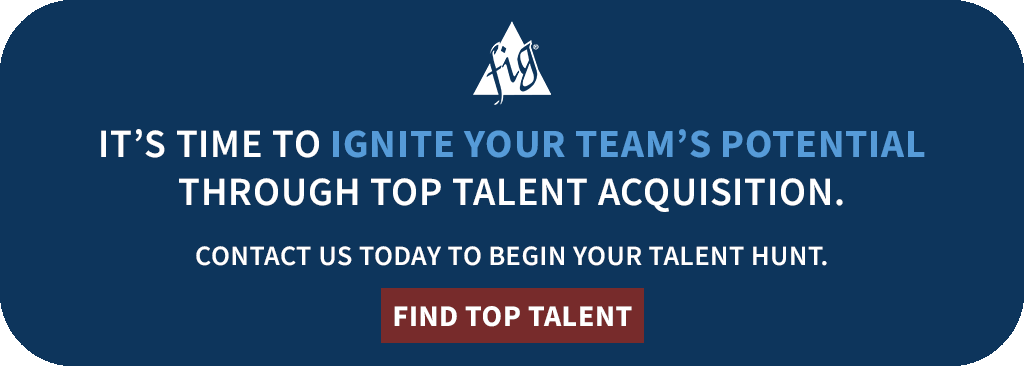Updated April 19, 2024, at 11:46 AM
Time is more important than ever before and as we continue to demand information faster we should never sacrifice quality for speed.
Believe it or not, candidates value their time just as much as you do as the employer. In fact, recent studies show that the time spent reviewing a job and resulting in an application from a candidate is quickly decreasing to match the seconds (not minutes) employers use reading a resume. Seven seconds.
Well, 7.4 seconds to be exact.
It’s all the time a resume is worth, on average. What can we determine about a candidate in six seconds?
Nothing.
However, we can decide if we’d like to keep reading and therefore spend more of our time evaluating the resume. The resume should tell a story, not simply about the candidate but why they’re a fit for your needs (company, culture, job responsibilities).
Here’s a list of the things you should look for in a resume, as an employer, when screening applicants:
Top of Resume Section
A list of skills highlighting core competencies and strengths that are key to success at your company. Objectives add very little value and often are space eaters. You know a candidate is interested in employment with your company, and for this position. You don’t need to be told he or she is looking for a job.
This is your first seven seconds. Be sure the candidate has communicated clearly the expertise they’ve accumulated throughout their career or education to interest you.
Be sure the list has been customized to your job advertisement/description. A general list which does not draw direct comparisons to your needs is the first sign the candidate took less time to review the information that you have on their resume thus far.
Employment Section of Resume
Now that the applicant has caught your attention, you can begin assessing overall “fit” based on what companies they’ve worked for and what responsibilities they’re used to performing. In this section, you should begin a detailed understanding of the information provided to ensure the candidate has included the name of each employer, the location (city, state) of employment, dates of employment, and title of the position.
The most common mistake I’ve found within a resume is the dates of employment. Often, candidates will have multiple positions listed as “present” or have two jobs simultaneously. This is the second example of the little time spent by a candidate on his or her resume.
Another aspect found in the employment section is career progression. A well-crafted resume should be in chronological order beginning with the most recent position first.
Employer Description on Resume
Although we have instant access to information at our fingertips, the best candidates will provide a brief (two-sentence) description of the company for each of their previous positions. This information can tell you many details about an applicant’s career.
Are they an industry match? Have they worked for large or small companies? Is the company successful?
Depending on your needs and what you may know about the previous employers, you can determine the likelihood of success at your company by the applicant.
Responsibilities Section of Resume
Job titles may describe different tasks and functions depending on the company, size, and employee. No more than two to three sentences should be given to illustrate what the candidate is or was accountable for on a regular basis. This information shouldn’ be given in sweeping generalities, but specifically, describe details of the key actions of their job.
Such details will begin to close the gap on your perception of the candidate as a match by comparing past actions to those required within your job description. If the applicant hasn’t tailored this information to the responsibilities section of your advertisement, they likely didn’t spend enough time reading the details.
Resume Accomplishments
The most overlooked opportunity by a candidate to provide specific details as to why and how they’re the best fit for a position is within the accomplishments section. Immediately following the responsibilities, the best resumes will outline two to four action-oriented results statements.
These statements should quantify how the applicant has performed in the past. Ideally, provided in a bullet format for easy segmentation and may include metrics where appropriate. This information is the closure necessary for you to decide if you would like to schedule an interview.
Also, upon reviewing the accomplishments, you can now begin to craft your interview questions by digging deeper into the most relevant bullets.
Resume Education, Certifications, Licenses
Typically provided at the bottom of the resume, the candidate should list all current and completed education, certifications, and licenses. The degree of importance of this information will depend on your needs.
However, the failure to list relevant education, certifications, or licenses required within the job advertisement is a failure by the candidate to fully understand what is necessary to be successful at your company.
Putting It All Together
There you have it, a totally awesome resume! You love the content, you’ve read their story, and you’re ready to meet this rock star in-person.
But wait, the formatting is awful. There are inconsistencies with font, margins, and even bullets. While some industry experts may tell you, this is an immediate red flag, I will not.
Much of the formatting in the application process today depends significantly on how the candidate applied for your position. If this version of the resume was received from any of the job posting sites, there’s a good chance it isn’t formatted the way the candidate intended.
If received by a third-party recruiter, don’t immediately blame (and therefore dismiss) the candidate. Simply ask the sender (via email or phone call) to send another copy directly to you in a Microsoft Word document.
This allows you to review the most current and compatible version of the resume available (as well as give you a touchpoint with the applicant).
Now, go out and land that rock star!



